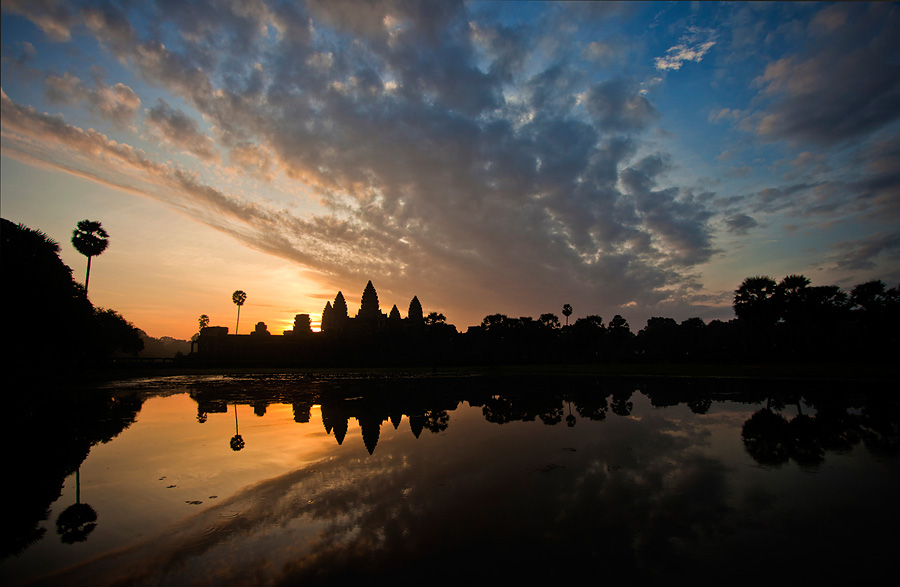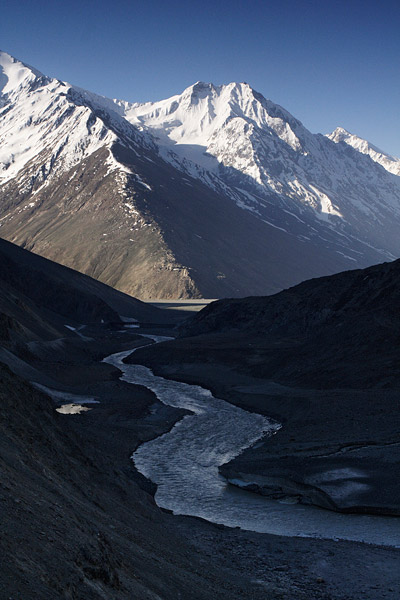It was nearly a thousand years ago when Khmer Kings commissioned the construction of gigantic temples on the edge of Tonle Sap Lake. They probably never had envisioned a future where people from across the world would come to visit their creations even centuries after their kingdom ceased to exist.
Siem Reap, the gateway city to the temples of Angkor receives more than two million visitors every year. This means, unless you go in the sweltering heat of summer months, you will never be able to find a lonely spot devoid of crowds anywhere in the large temples spread across the landscape. This has become such an important consideration for some travellers, a few travel agencies claim to keep informers in every temple and help their clients find less crowded spots!

With the crowds growing every year, Siem Reap’s attractions are no longer limited to the ancient temples. Travellers suffering from temple-fatigue can pick from a wide choice of activities and entertainment geared towards the tourists – such as a circus, joy-rides on all-terrain vehicles, visits to crafts villages and much more. And when the darkness falls, there is always the pub-street where an amazing choice of restaurants serve up food and drinks from across the world.
“I’d rather take a 12-day trip and spend $100 per night on hotels than a four-day trip where I spend $300 per night on accommodations.” – on Gadling, commenting on a list of Conde Nast Traveller’s ‘best new hotels’, which is full of very expensive hotels.
A statement like this shows how an online magazine or a blog may be able to go extra length in being candid about travel than a print magazine. You will never see such words uttered in a print magazine, where expensive services and products are usually a big source of advertising revenue. If they do, they will probably see their advertisers run away from the next issue, and the magazine closing doors in the subsequent one.
Very often, the mantra of print media is to promote the most expensive – the stuff for which sellers pay to advertise and not necessarily what is best for the traveller. I am often baffled to see ‘Chic clothes for your summer travel, cool things to pack, the list of finest hotels to stay in, and so on..’ in the magazines. The local experience? Of course, the chef at the restaurant in 21st floor of the hotel will dish out some of the finest local dishes. The organized group tour to the local village help you take pictures of people who specially pose for your cameras wearing local clothing..
To be fair for them, the expenses of running a magazine may make publishing such content essential for their survival. And to add further, not all stories tend to have a similar angle. Magazines often do a great deal of research and publish plenty of authentic, original and unheard travel experiences that benefit the travellers. And here in India, a good number of travel magazines, including Outlook Traveller and Lonley Planet, do offer plenty of down to earth and real travel experiences. But it also requires the reader to be alert, who should consciously work to filter the true recommendations against content that is merely a bait for the advertisers.
The above thoughts were scribbled down impulsively when I reflected on Gadling’s story, initially written aggressively and toned down later to look at things analytically than emotionally. I started with an intent to deliver a message about how travel blogs are probably much better off than magazines. But reflecting more on the topic, I realized that blogs do come with their flaws as well. While it is essential for the reader of a travel magazine to analyse the content and see what is good for him/her, perhaps the same applies to blogs too.
A magazine like CNT can afford to work on a list of ‘best new hotels’ by sending their correspondents and stringers to visit the place, perhaps rate them on a set of qualities and parameters, have the editors pour over the reports and eventually produce the list. Not all print magazines may do such extensive work, but there is a good chance that they have done some hard work. But blogs, which too often produce their ‘top 10 lists’ — top 10 honeymoon destinations, top 10 things to do in place X — are more often than not a result of secondary research (hail Google!) or created with limited personal experience (I have seen only place A, B, C in a destination, let me enhance them by calling it the top 3 places to see in the destination). Travel blogs tend to be usually rich in personal experiences, but in many occasions, may not match the quality of the content in a magazine.
Blogs too, especially popular ones that get noticed by a lot of people, may be vulnerable to posting content in favour of a place, service or a product in exchange of some benefits. I must admit here that I have personally accepted invitations to travel at invitees cost and have written about invitees offerings (I must add here that I have limited my stories only to facts and/or personal experiences in all such occasions). I also receive frequent emails where I am offered a payment for a review, post on certain topics or for contextual links within my posts without declaring the sponsor (aka paid news) — something I have never accepted till date. When I was first offered these gigs, I politely wrote back to them on advertising options that I permit on the blog, which never came in favour from the buyers compared to paid posts (now I simply ignore those emails). But blogs may often be tempted by such offers, considering that it takes a lot of time, effort and sometimes even money to regularly maintain a blog.
I began this story in approval of Gadling’s take on print media’s obsession on the expensive, on why blogs may score better in content and why readers may have to filter the content in print media. But as the story progressed and I reflected on all angles to it, I realized that a lot of it may apply to online media as well. What is your experience, and take on this?
If you are like me who trolls two hundred travel related websites everyday, you would have read loads of people writing about virtues of packing light. Celebrated travel writer Rolf Potts took it very seriously and went on to prove a point by travelling without any baggage (impressive, isn’t it?). Travel blogger ‘Backpacking Ninja’ recently wrote about how she slowly reduced the weight of her pack to 20% of what she once carried (equally impressive, no?). I think they are doing a great job by cutting the excesses when they are on the move. ‘Travel light’ is an advice that I have grown up listening to and seeing it written on train stations and inside the buses. But I refuse to take it. On conversation with a fellow travel blogger Lakshmi a few days ago (as she complained about too much stuff she is packing on her journey), I mentioned that I would rather travel with a big pack and carry all that I need.

I could not have shot this photograph without a tripod
My unwillingness to travel light is partially professional and is partially like an insurance. In most occasions when I do serious travel, I carry bulk of my photography gear with me, which adds up to a large percentage of the weight. A sturdy tripod that I usually carry everywhere is my biggest burden, yet I never leave it behind. There are times where I have never used the tripod during the journey and then there are times when I have used it for just ten minutes in a week-long journey. But in those few times when I have used it, I have come back with some satisfying images. And it does matters a lot to me. In the few occasions that I have left the tripod at home, I have rued about missing excellent photo-opportunities that could be capitalized only with a tripod. Having learned my lesson the hard way, I now always carry the tripod with me. Other photography gear adds up to the weight of the bag as well: a professional camera body adds a kilo while the lenses add two more. A few photography accessories may not add much weight, but they do take up some precious space.
I also prefer to carry at least an extra pair of clothes for every journey, sometimes two pairs if the journey is a long one and the season is of monsoons. If it is winter, I would rather keep myself warm and comfortable instead of packing light and getting troubled by the cold (this, despite the fact that I can take cold weather very well). In the days when I am travelling frequently and also have a lot of work in hand, I also carry my laptop so that I do not have to choose between work and travel. All these ensure that I always end up carrying a big pack stuffed from corner to corner.
All this extra weight causes some discomfort, but I would rather carry all the stuff than miss them during the journeys. As I see it, you are carrying the luggage on your back only for a very small duration of the journey. It will be resting somewhere in the luggage rack while you are travelling and will be left in a room when you are exploring a place. More often than not you don’t need to lug your luggage for more than a kilometer, which I don’t have a problem with even if it is very heavy.
If I am travelling for a week or longer, I usually pack a smaller day-pack inside a large pack. When I arrive at a place and go exploring the location, I leave the big pack behind and wander around with the day-pack. If I am on a short 2-3 day journey, I try to carry a medium sized pack or sometimes even carry two small bags.
One big exception is when I go on a trek and do not engage the services of porters or ponies to carry my stuff. In such occasions, I would think ten times before adding every microgram of unnecessary things into the bag. The tripod will have to stay home as well. I did my first Himalayan Trek (during which we climbed higher and higher without seeing a single incline for four days) eight years ago, carrying my own backpack which included a tripod. I survived that trip without too much trouble, but today I would rather try to keep my bags light in such times. I know I can enjoy the walk better that way.
And then there are occasions when I decide to travel without taking the camera with me. On such journeys, my baggage hardly weighs anything, even with that pair of extra clothes or winter wear.

